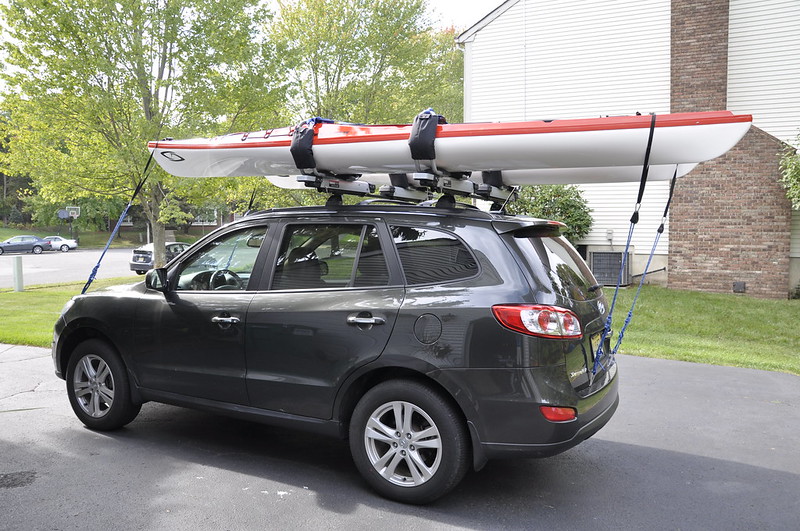I have two Thule Hull-A-Ports on a 2016 Jeep Grand Cherokee with factory bars. Just bought them and have used them twice to haul our two 2-seater Ocean kayaks. During one hour drives, the rear rack seems to deviate about 1/2" from their original position so the tips of the kayaks are no longer above the hood but point outward. I use the factory Thule tie downs and the bow and stern ropes connected to the metal frame. Everything is tight when we leave. It’s as if the wind is forcing the kayaks to bow out. We have a 4 hour drive to kayak the Sleeping Bear Sand Dunes in a couple weeks and any help to ease my concern is appreciated. This is a photo without the bow and stern ropes attached. I now place them with the stern facing forward.
Do you cross the bow ropes?
I have not. Is that a thing? I am happy to try.
How secure are the J-racks to the factory bars? Especially the rear ones. How far apart are they?
Is wind pressure forcing the kayak bows outwards? Crossing the bow ropes might indeed help.
As above, cross the bow lines It pulls the boat against the bar rather than away from it. Might also want to consider cockpit covers but only if the cockpit is not so ginourmous as to threaten their staying on.
“Might also want to consider cockpit covers…”
Celia, good idea but I believe the Ocean tandems are all SOTs.
Good suggestions from all. They are sit on tops. I had not tightened the J-racks on the cross bars before each trip and wondered, maybe, they need to be tightened before each trip. I had them pretty tight on the way home from our last trip and they still migrated. Will go as tight as I can and cross the bow ropes.
I have each J-rack about a half-inch from the edge of the cross bar…which is the main way I can tell they moved. In their original place, there is about 18" between the J-racks…before they move. I suspect some wind tunnel is being created. I could put them closer together, but it will be tougher for my wife and I to load and unload.
Just wondering - how far apart are the factory rails?
I didn’t feel comfortable about the relatively short distance between the factory rails on my Hyundai Santa Fe, which prompted me to add Thule towers and bars. Obviously the wider set the bars are, the more support the kayaks will have.
I now use Thule Hullavators to make loading easier but I started off with Hull-A-Ports…

I will give you both measurements:
The distance between back end the front factory rail and the front end of the rear factory rail is exactly 24".
The distance between the two Hull-a-ports (right to left) is 16".
I see you have your kayaks situated different than mine too. I feel like our two-seaters are too wide (and we would need to invest in entirely new racks in the same year) to situate ours as your nice boats are.
One thing I noticed is yours are hanging off the back more than I have situated ours. Is there anything involved in that?
Thanks for the question, I hope I gave you the info you needed.
The boat supports should NOT move, and if it were my setup, I’d invent a way to ensure that they can’t move. Your tie-downs aren’t there to help reinforce your rack, and though it’s logical to use them that way, you should see what you can do to make the boat holders more secure. This illustrates how much extra strain is put on the rack (and also the rack attachments to the roof) when cross bars are too close together. In decades past, you simply did not see cross bars closer together than four to six feet, so it’s odd that we’ve come to think of bars that are barely more than two feet apart (or even less) are somehow adequate. They are not.
I just watched a You Tube video on how to adjust Jeep factory cross bars and it doesn’t look too difficult. I will try to move them further apart. Thanks for the advice.
Thanks for all the suggestions. Today I moved the factory bars as far apart as they would go. The Thule racks now sit 27" apart.
That sounds better and I suspect it will fix your problem.
